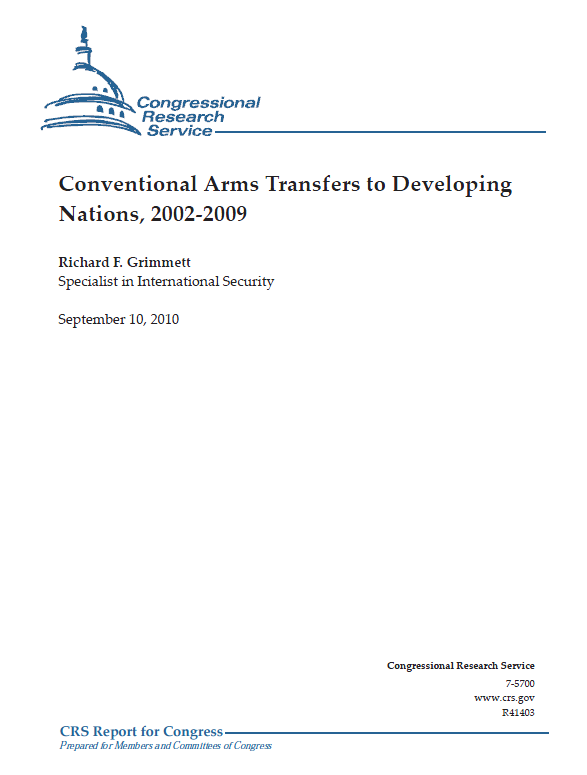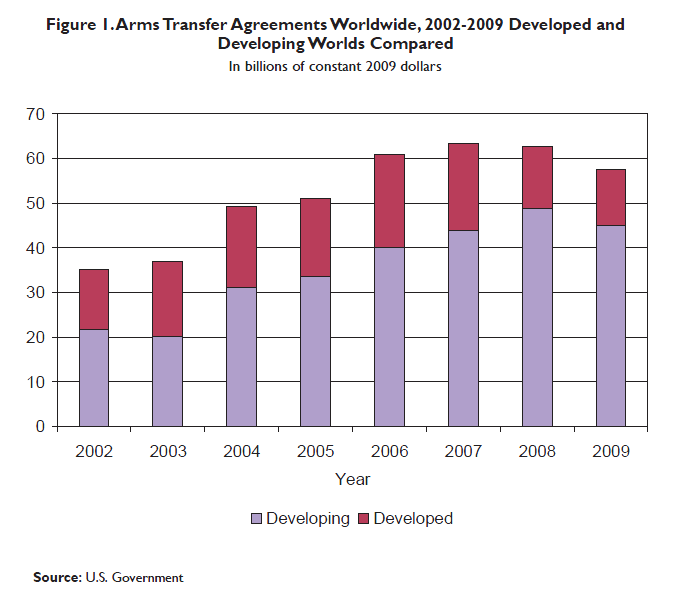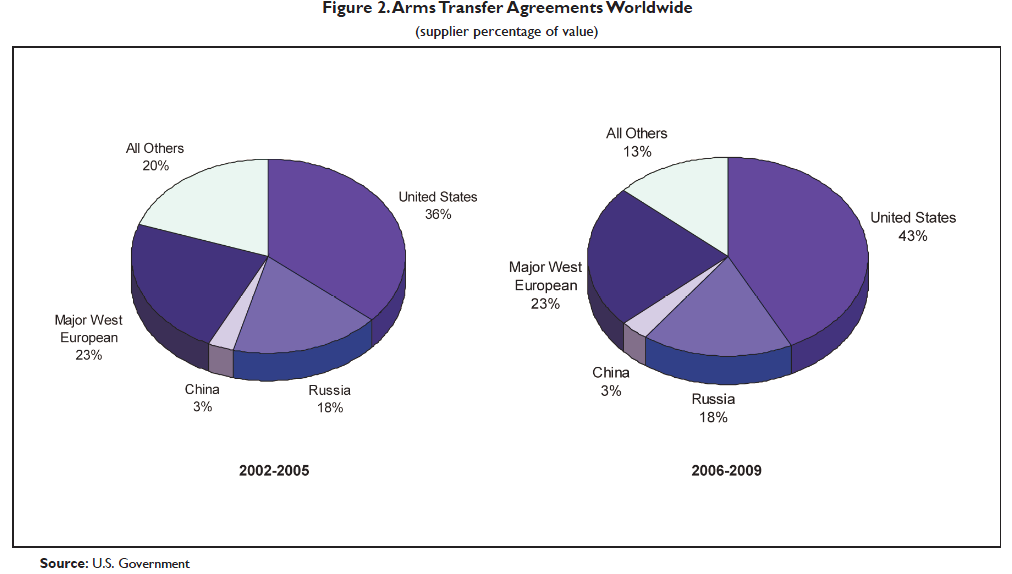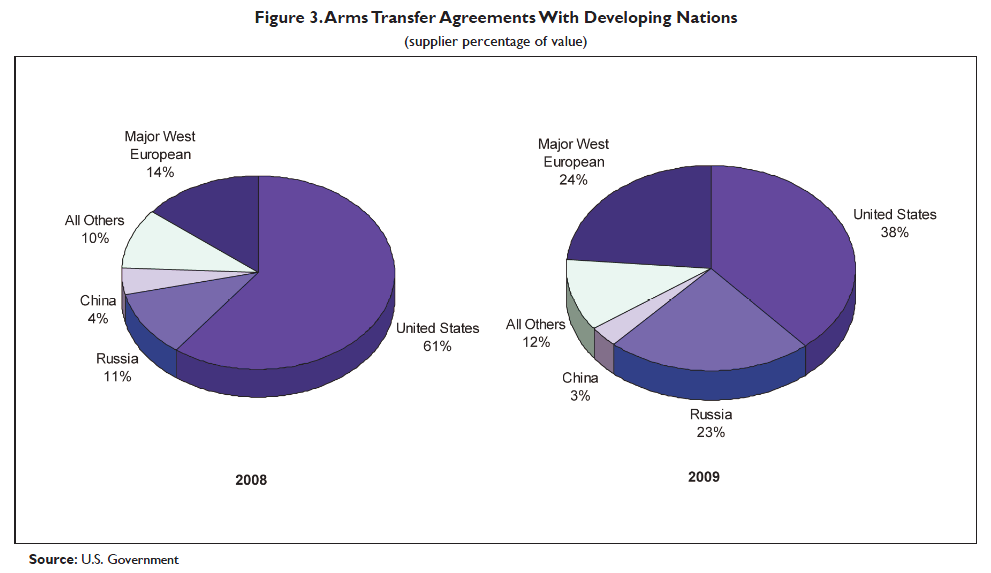 CRS Report
CRS Report
- Richard F. Grimmett, Specialist in International Security
- 89 pages
- September 10, 2010
This report is prepared annually to provide Congress with official, unclassified, quantitative data on conventional arms transfers to developing nations by the United States and foreign countries for the preceding eight calendar years for use in its policy oversight functions. All agreement and delivery data in this report for the United States are government-to-government Foreign Military Sales (FMS) transactions. Similar data are provided on worldwide conventional arms transfers by all suppliers, but the principal focus is the level of arms transfers by major weapons suppliers to nations in the developing world.
Developing nations continue to be the primary focus of foreign arms sales activity by weapons
suppliers. During the years 2002-2009, the value of arms transfer agreements with developing
nations comprised 68.3% of all such agreements worldwide. More recently, arms transfer
agreements with developing nations constituted 72.8% of all such agreements globally from
2006-2009, and 78.4% of these agreements in 2009.The value of all arms transfer agreements with developing nations in 2009 was nearly $45.1
billion. This was a decline from $48.8 billion in 2008. In 2009, the value of all arms deliveries to
developing nations was nearly $17 billion, the lowest total in these deliveries values for the entire
2002-2009 period (in constant 2009 dollars).Recently, from 2006-2009, the United States and Russia have dominated the arms market in the
developing world, with both nations either ranking first or second for all of these four years in the
value of arms transfer agreements. From 2006-2009, the United States made $68.7 billion in such
agreements, 38.6% all these agreements expressed in constant 2009 dollars. Russia made $42.4
billion, 23.8% of these agreements. During this same period, collectively, the United States and
Russia made 62.4% of all arms transfer agreements with developing nations, ($111.6 billion (in
constant 2009 dollars) during this four-year period.In 2009, the United States ranked first in arms transfer agreements with developing nations with
nearly $17.4 billion or 38.5% of these agreements, a decline in market share from 2008, when the
United States held a 60.4% market share. In second place was Russia with $10.4 billion or 23.1%
of such agreements. France ranked third with $7.1 billion or 15.8%.In 2009, the United States ranked first in the value of arms deliveries to developing nations at
$7.4 billion, or 43.6% of all such deliveries. Russia ranked second in these deliveries at $3.5
billion or 20.6%.In worldwide arms transfer agreements in 2009, the United States dominated, ranking first with
$22.6 billion in such agreements or 39.3% of all such agreements. Ranking second in worldwide
arms transfer agreements in 2009 was Russia with $10.4 billion in such global agreements or
18.1%.In 2009, Brazil ranked first in the value of arms transfer agreements among all developing nations
weapons purchasers, concluding $7.2 billion in such agreements. Venezuela ranked second with
$6.4 billion in such agreements. Saudi Arabia ranked third with $4.3 billion.…



